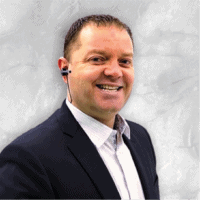In the iconic Seinfeld episode titled The Strike (a/k/a the Festivus episode), George Costanza invents a fake charity called “The Human Fund” to get out of giving holiday gifts to co-workers. This fake charity has the moniker “Money For People.” Unfortunately for George, his bogus scheme is outed when his company makes a cash donation to the Fund, and he is forced to explain why he did it in the shadow of the Festivus Aluminum Pole.
In some instances, workers’ compensation benefits are similar to those of the Human Fund, which is money for people injured at work. Members of the claim management team are guardians of that money and must make decisions to ensure injured employees are paid all the benefits they are entitled to. What is often missing from the process is the “human” element. Adding that component to your program can help reduce costs and increase workplace morale.
Deny or Discontinue Benefits in Like a Human
The Workers’ Compensation Human Fund operates on the Platinum Rule – Treat others as you want to be treated! This is something that a claim handler must consider at all times. This can be accomplished by applying the following principles to your work habits:
- Return all telephone calls and emails promptly. Never let something go unreturned for more than 24 hours. When you are out of the office, change your voicemail greeting to “Out of Office Reply.” Update the message when you return.
- Never be afraid to assist others on the claim team when they are out. Even if you level set something with the employee, let them know when their claim handler will return.
There is a saying within the industry – claim handlers are there to help put together broken lives. Now is the time to implement these best practices within your claim team or organization. Never forgetting the “human element” pays dividends.
Denying Claims The Human Way
The Workers’ Compensation Human Fund requires that claims are not denied outright with the hope the employee will go away. Instead, all members of the claim management team must assist their insureds in having the best injury reporting system and instruct interested stakeholders on how and when to report work injuries. Best practices to consider include:
- Offer tools to assist employers and their managers with access to telephonic nurse triage services.
- Encourage employers to subscribe to a Preferred Provider Organization (PPO) to provide immediate non-emergency medical care following an injury.
Before denying any workers’ compensation claim, it is paramount that a complete investigation be conducted. All the facts need to be uncovered, and a timely decision needs to be made.
Nota Bene: All denials of primary liability must be made in good faith and include a factual and legal basis for denying primary liability.
Other Ways to Promote the Workers’ Compensation Human Fund
There are other ways members of the claim management team can promote the principles of The Human Fund in their best practices. These are easy to implement and will remind others that injured employees are people!
- Offer “language line” services for claim handlers. Non-English speaking employees and even people who use English as a second language are nervous about not using their native tongue. Offering free and easy-to-access translation services ensures accuracy in claim reporting and other matters.
- Discuss with employer representatives the small things they can do to increase workplace morale following a work injury. Providing transportation to a medical facility for non-emergency medical care is a great place to start.
- Train everyone on how to provide best-in-class customer service with sympathy and compassion. Never be judgmental.
Now is the time to focus on the human element in workers’ compensation.
Conclusions
Millions of Americans were entertained every week by the crazy antics of Jerry Seinfeld and his crew. Among those memorable moments is the creation of The Human Fund. Lessons from this comedy can positively impact your workers’ compensation program. It starts with treating the injured employee like a human following a work injury. Everything flows from there.

Michael Stack, CEO of Amaxx LLC, is an expert in workers’ compensation cost containment systems and provides education, training, and consulting to help employers reduce their workers’ compensation costs by 20% to 50%. He is co-author of the #1 selling comprehensive training guide “Your Ultimate Guide to Mastering Workers’ Comp Costs: Reduce Costs 20% to 50%.” Stack is the creator of Injury Management Results (IMR) software and founder of Amaxx Workers’ Comp Training Center. WC Mastery Training teaching injury management best practices such as return to work, communication, claims best practices, medical management, and working with vendors. IMR software simplifies the implementation of these best practices for employers and ties results to a Critical Metrics Dashboard.
Contact: mstack@reduceyourworkerscomp.com.
Workers’ Comp Roundup Blog: http://blog.reduceyourworkerscomp.com/
Injury Management Results (IMR) Software: https://imrsoftware.com/
©2024 Amaxx LLC. All rights reserved under International Copyright Law.
Do not use this information without independent verification. All state laws vary. You should consult with your insurance broker, attorney, or qualified professional.


